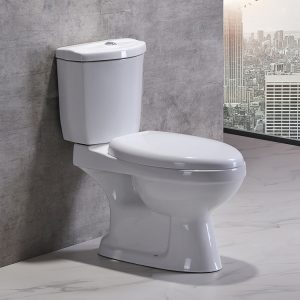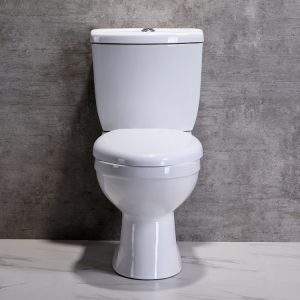There are two types of toilets: wall-mounted and floor-mounted. The origin of floor-mounted toilets is much earlier than that of wall-mounted toilets, but wall-mounted toilets have come from behind and are loved by users.
Compared with floor-standing toilets, wall-mounted toilets save space, which is a boon for small rooms. Moreover, the in-wall toilet is removed to sanitize dead corners, which is more convenient for cleaning.
But if the toilet is broken in the future, the floor-standing toilet will be more convenient to repair, and the wall-mounted toilet will need to be modified.
The length of the toilet is generally 70cm, and the width is between 30cm-50cm. For larger people, 50cm is more suitable.
two. Installation Precautions
1. Floor type
Before buying a toilet, we need to measure the distance of the pit, that is, the distance between the sink and the wall. When measuring, we need to pay attention to the fact that the size of the merchant takes the size of the tiles into account. The pit pitch size is generally 30cm or 40cm.
Do not install with cement during installation, otherwise the cement may squeeze and swell the porcelain body. Glass glue can be used for installation. (Wait for the glass glue to solidify and try flushing again)
2. In-wall style
The in-wall toilet must match the size of the concealed water tank. Before installation, a bracket must be installed to support the whole. The bracket is divided into an “H”-shaped iron frame and a “V”-shaped iron frame.
Taking into account the comfort of use, the distance between the toilet plane and the ground on the size of the bucket is generally 40-45 cm. Of course, this is a general size, depending on the height of the family.
The installation of the drainage pipe uses the original pit to install the concealed water tank, and the short pipe connecting the water tank and the drainage pipe must be greater than 90 degrees to prevent blockage.
When making false walls, there are 4 installation methods: single wall installation, false wall installation, single half wall installation, and false half wall installation. There is no trace of single-wall installation after the installation of the water tank, while the latter three can be more or less visible.














